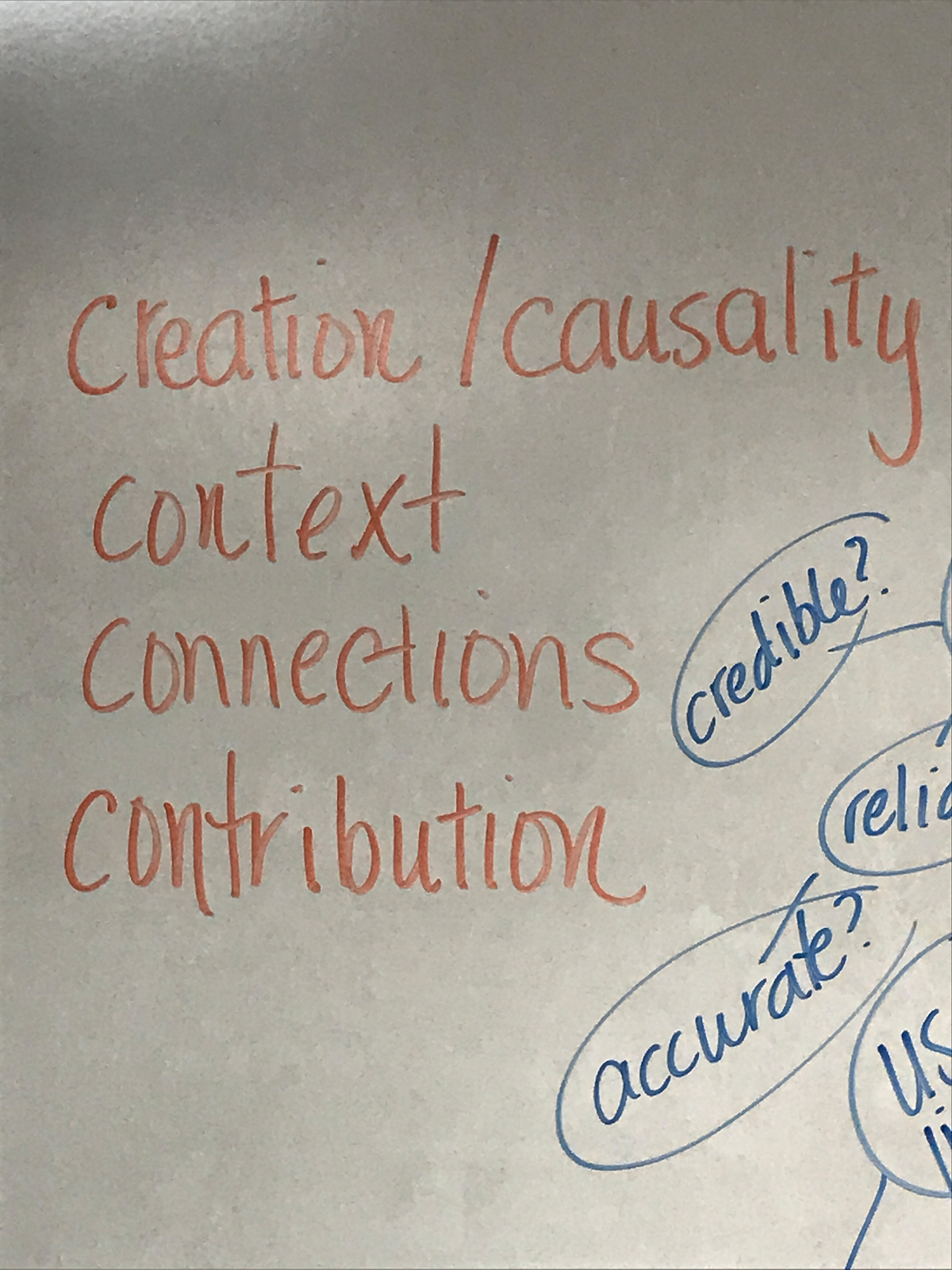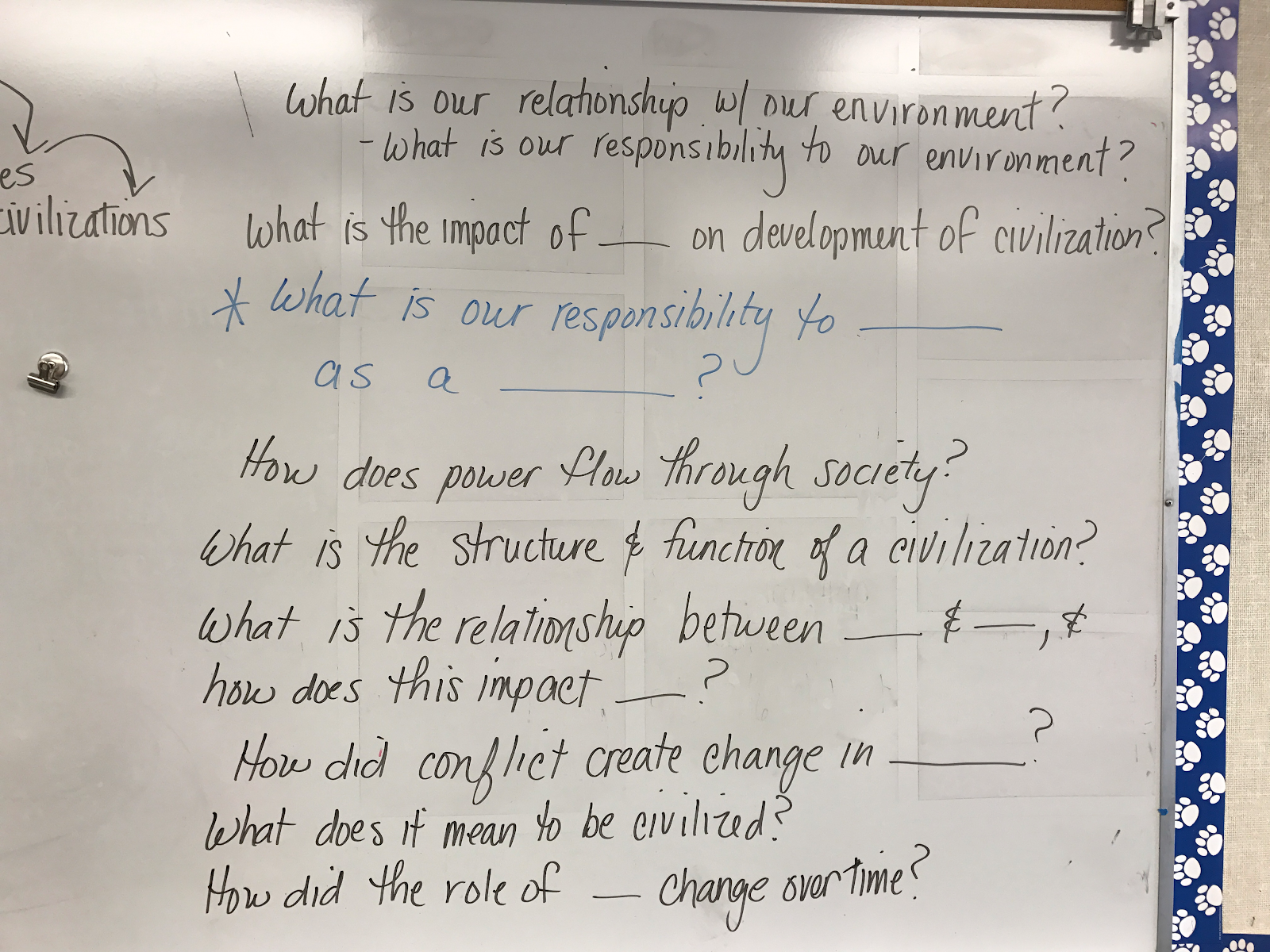Lenses & Driving Questions
Tuesday was an edu-cool day. I had a chance to articulate and build on the mess of ideas that constantly roll around in my busy brain. I found a group of likeminded educators who want to change things up like I do ...so we met and started to reimagine our curriculum. Four teachers (one of whom is our tech TOSA) met for three hours to brainstorm ideas on how to retool social studies. We have committed to working with other colleagues in other schools and districts to reimagine social studies and humanities. This was a grass roots idea built on conversations at school and twitter connections I’ve been fortunate to make. A few of us will get a bit of summer work money, but this is a gathering of the minds to make the student experience better. This was only the first day.
Like my colleagues in our motley PLN, I have been constantly frustrated and outright bored with the traditional model of teaching social studies - chapter by chapter, coverage over true knowledge. As a director of and trainer at the Oak Park Inquiry Institute, I am well versed in the process of inquiry (or what many call project or problem-based learning). As much as I have helped others revamp their curriculum and instructional strategies, and as much as I have improved my own curriculum in language arts and social studies, I am still dissatisfied. I am simply too traditional for my own taste and not true enough to the process of inquiry. Oh yeah, and I’m bored stiff...imagine how the kids must feel?
In attending the Teaching the HSS Framework conference in April, I was pleased to learn the updated framework advocates for inquiry as a primary focus, which includes helping students ask big, deep, broad questions about history and its connection to today. Teaching through driving questions is something I have been doing for years, but I’m still “delivering” content mainly through presentations and lecture. Nevertheless, it was validating that the state was catching up to my PLN!
What pushed my decision to abandon the old stodgy way of chapter by chapter teaching was that the updated framework gave me permission to (like I needed that for some reason…) 1. not cover everything and 2. to teach using a case study method.
A case study method means that for each driving question, you use only a few examples to approach in depth. For instance, take a look at the brainstorm below:
Not only was this conference-inspired massive concept map rolling around in my head for almost two months, but it is organized not around the ancient civilizations I am required to teach in 6th grade, but around themes - especially themes of history: geography (and its own themes), political systems, culture, economics, and history. This is a work in progress…
The idea is to approach history - and in my case ancient history - by asking for example:
What is the impact of geography on the development of civilization?
or
What is our relationship to the environment?
Through one or both of these driving questions, we can start the year using the case studies of early man and the beginning of village life in Mesopotamia to examine the impact of geography - especially the impact of rivers - on the development of civilization. Or, using several civilizations/empires such as the Persians, Chinese, and Egyptians, we can can examine the same impact of geography but then explore the increasingly complex relationship between humans relying on their environment to humans manipulating their environment to prosper. Notice, this not teaching Ch. 4, 5, and 8 as our textbook would dictate. With a case study approach to viewing history through lenses, we can study several civilizations at once and by year’s end, the kids will have gotten to know them all .... but deeply.

Besides organizing and viewing history through lenses, I want to change how we approach the thinking about history (see pix). I tend to think of everything through driving questions. I want students to research and examine how civilizations, structures, and belief systems are created - What are the root causes of _____________?
Besides organizing and viewing history through lenses, I want to change how we approach the thinking about history (see pix). I tend to think of everything through driving questions. I want students to research and examine how civilizations, structures, and belief systems are created - What are the root causes of _____________?
What is the context in which certain events happen and how does that context impact _________? To study events without understanding the context, or cultural/political/economic environment in which they happen is foolhardy at best, and teaching in isolation at worst.
What connections do ____________ have with ____________? The new HSS Framework emphasize points of contact and sites of encounter between peoples. This emphasis really solved a main problem we were having with the chapter-by-chapter approach. Focusing on how cultures/societies interacted and changed each other over time, allows for a more integrated approach to history.
How did ______________ contribute to _________________? What were the impacts of those contributions? To follow on the points of encounter, we have golden ages and renaissances throughout cultures, and we often look at those contributions during these time periods of great ‘output’, but do we really spend enough time on how those contributions impact us today? And I don’t mean the two additional pages in our textbook; I mean the real impact of yesterday’s technology and achievements, good and bad. What are the cost-benefits of these contributions - for example, the Chinese invention of gunpowder? Did it change warfare then and now? How does a simple invention like this influence personal power nowadays? Think street violence and the prevalence of handguns.
And to end for now, here are some other driving questions that were rolling around my busy brain:


